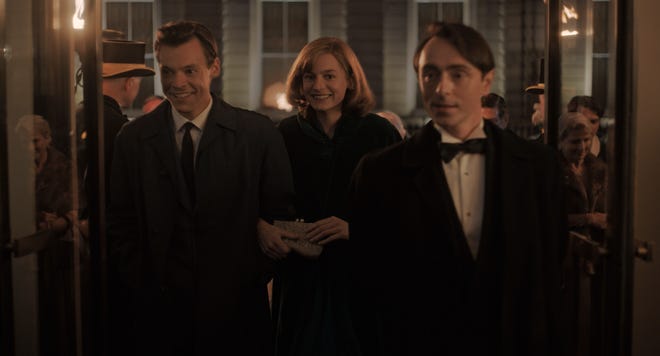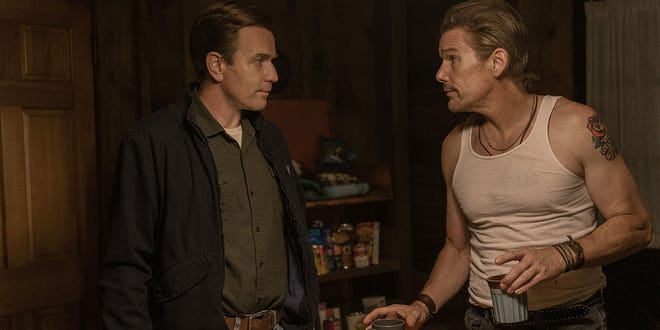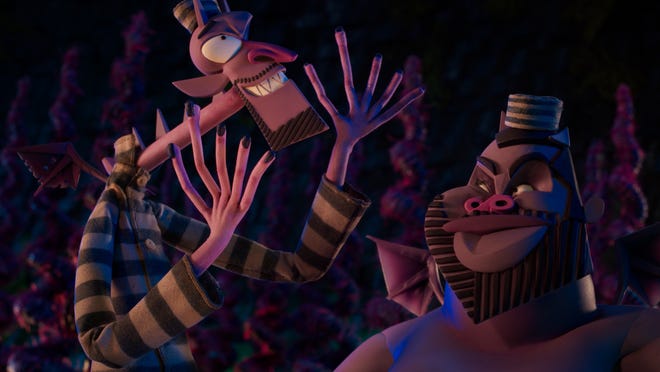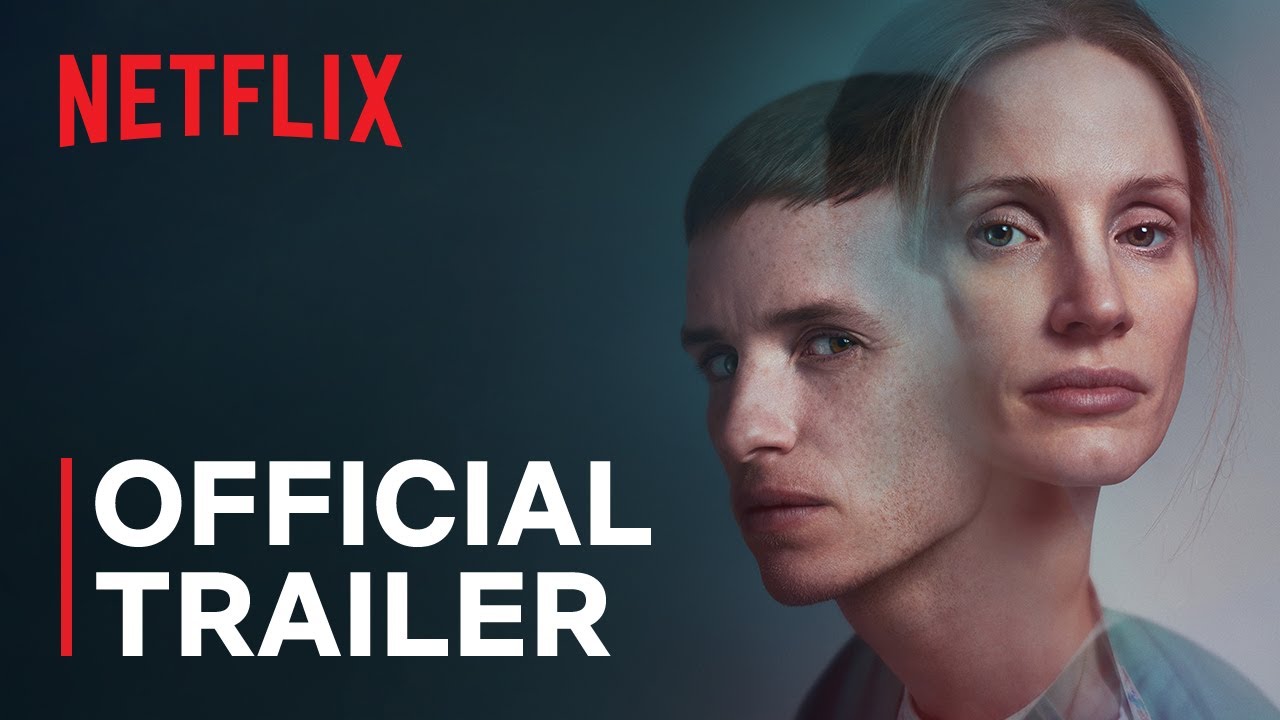To accommodate a week busy with awards-chasing movie releases, here’s a quick rundown of what’s worth your time and what’s not. Most of the offerings are available to stream, while a couple will debut in theaters before making the jump to streaming in the coming weeks:

‘The Good Nurse’
If not for the resuscitative efforts of Oscar-winners Jessica Chastain and Eddie Redmayne, Tobias Lindholm’s accounting of the capture of a homicidal New Jersey RN would be DOA. The A-listers repeatedly breathe life into a flatlining B movie taking its cue from the Lifetime canon in chronicling how the title character, Amy Loughren (Chastain), was integral to bringing serial killer Charlie Cullen (Redmayne) to justice in 2003. Initially, it’s just what the doctor ordered, as Lindholm (penner of the Oscar-winning “Another Round”) effectively injects social commentary into Amy’s struggle to remain alive (a heart condition, no insurance) and afloat as a financially strapped single mother of two girls. But he and scripter Krysty Wilson-Cairns (“1917”) quickly abandon that tack in favor of a standard procedural path, once Amy goes to the police with concerns about her new, overtly genial co-worker, Charlie. The lingering question is, who’s more evil: Charlie, or an image-conscious healthcare system that — not unlike the Catholic Church — allowed Charlie to move from hospital to hospital despite suspicions he used insulin-spiked IVs to purposely kill as many as 400 patients? Consider it a tie. But also consider Chastain and Redmayne invaluable in rendering this leaky bedpan a guilty pleasure. (R for language; streaming on Netflix; Grade: B)

‘My Policeman’
Pop sensation Harry Styles takes pride in his sexual ambiguity. And he effectively demonstrates it in his convincing portrayal of a London bobby forced to hide his love away at a time when being gay could get you tossed in prison. So, partly out of guilt, and partly for appearance, his Tom takes a clueless wife in Marion (Emma Corrin) while secretly lusting after museum director, Patrick (David Dawson). As the film opens, an aged, dying Patrick (Rupert Evertt) is wheeled into the seaside retirement cottage shared by Tom (Linus Roache) and Marion (Gina McKee), setting the stage for a reflective odyssey marked by a trove of stilted flashbacks to when the trio was young and adventurous. So, to and fro we go, bouncing from the dreary present to the even gloomier 1950s. Director Michael Grandage does little to interrupt the monotony in failing to make a point beyond how stifling it was to be gay in mid-century England. In turn, the cast struggles to create depth in cardboard characters with little to no personality. It’s a slog made worse by the irksome task of keeping straight which actor is the silver-haired Tom. It’s Roache, but oddly enough, Everett looks more like an elder Tom. And it’s Roache who best resembles a young Patrick. But then, it’s in keeping with the film’s futile search for identity. How ironic! (R for sexual content; in local theaters and streaming on Prime Video Nov. 4; Grade C-)

‘Raymond & Ray’
Writer-director Rodrigo Garcia digs his own grave in pairing Ewan McGregor and Ethan Hawke in a silly family dramedy about squabbling half-brothers fulfilling their deadbeat dad’s final request to have them personally inter him. The problem lies in what’s being shoveled, and it ain’t dirt. The actors don’t have much chemistry, but it’s Garcia’s feeble dialogue and awkward plotting that bury the film. There’s too much quirk and not enough substance. There are also far too many peripheral characters showing up at the departed’s graveside to either spark contrived romances or to emphasize that Pops spent most of his life fathering children with multiple women. If Garcia had limited the farce to 85 minutes, it might have been tolerable. But he includes a 25-minute coda that’s a cheap ploy to essentially exploit Hawke’s trumpet-playing skills perfected in 2015’s “Born to Be Blue.” As for McGregor, he errs in infusing far too much self-pity into the sadsack, soon-to-be thrice-divorced, Raymond, who, like Hawke’s Ray, blames Dad for lives that “never panned out.” Jeez, get over it, already! Toss this one onto the pyre. (R for language, some sexual material; streaming onApple TV+; Grade: C)

‘Wendell & Wild’
Ineffectual brothers and graveyards are also at the fore in the latest stop-motion animation from the great Henry Selick (“James and the Giant Peach,” “Coraline”). Much like his smash, “The Nightmare Before Christmas,” Selick goes all in on the macabre in a tale about an orphaned girl (voiced by Lyric Ross) seeking to re-animate her parents via a special hair-growth formula offered by a pair of scheming, demon siblings portrayed by Keegan-Michael Key and Jordan Peele, who co-wrote the jumbled script. The comedy team takes veiled swipes at racism and political corruption by way of a plot about a greedy couple seeking to turn an economically depressed town into the home of a privatized prison. Unfortunately, the jokes are wildly uneven, if not cliched. The draw is Selick’s jaw-dropping animation, which is literally out of this world in taking a deep dive into a realm filled with ghouls and zombies selfishly feeding off the living. Can one little girl and a similarly possessed nun (Angela Bassett) put an end to the madness by employing their wits and a wheelchair-bound school janitor? Of “corpse” they can! (PG-13 for violence, brief strong language, substance use, some thematic material, streaming on Netflix Oct. 28; Grade: B)

‘Call Jane’
No one foresaw the Dobbs decision while shooting Phyllis Nagy’s fact-based crowd-pleaser about a half-dozen Chicago women uniting to provide safe abortions in the years before Roe. But the recent Supreme Court ruling granting states the right to turn back the clock and again make the procedure illegal, underscores the poignancy of a time when women had no control over their bodies. In a way, Nagy (co-writer of “Carol”) is showing us the future by delving into the past, when a woman’s only escape from “trouble” was a back-alley abortion — if she could afford it. Our guide is Joy (Elizabeth Banks), the dutiful, naive wife of a wealthy attorney (Chris Messina in a horrid wig). When we meet her during the summer of 1968 she’s pregnant with her second child. But the discovery of a congenital heart condition demands she get an abortion to survive. With no one to perform it, she’s forced to go underground and finds a godsend in Call Jane, a group of women – none of them named Jane — who, for $600, promises a clean, safe abortion. Led by headstrong Virginia (a superb Sigourney Weaver), the diverse group of lovable subversives – including a nun! – not only treat Joy, but recruit her into the ranks. As time passes, her responsibilities grow, and so does her indoctrination into feminism. Banks is marvelous at capturing Joy’s evolution from mousy to bold and assertive. Initially, the film’s heavy air of humor seems flippant, until you realize it’s an essential element in making such a controversial topic so imminently watchable. (R for some language and brief drug use; showing in local theaters Oct. 27; Grade: B)

‘Louis Armstrong’s Black & Blues’
Documentarian Sacha Jenkins doesn’t uncover much new in his profile of the great Satchmo, but he incorporates enough archival audio and video clips to keep you interested. Most intriguing is how Armstrong’s image has evolved over time. Looked down upon by fellow Blacks during the height of the civil rights movement for being an “Uncle Tom,” we’re told Armstrong is now warmly embraced for conquering numerous barriers in his climb to the top. He loved his country, as evidenced by his fondness for trumpeting the national anthem, but he was never blind to the abundance of racism he experienced in Hollywood and while touring the Jim Crow South. Right or wrong, by anyone else’s standard, he refused to let the abuse wipe that infectious smile from his face. If there’s a problem with Jenkins’ telling of Armstrong’s story, it’s that it’s too short to accommodate such a monumental player, innovator and singer. While watching, I kept reflecting on what a field day Ken Burns would have exploring the man affectionately called “Pops.” Still, it’s a must for Armstrong fans, and for those new to Satchmo, a great introduction to a jazz icon. (R for language; streaming on Apple TV+ Grade: B)









